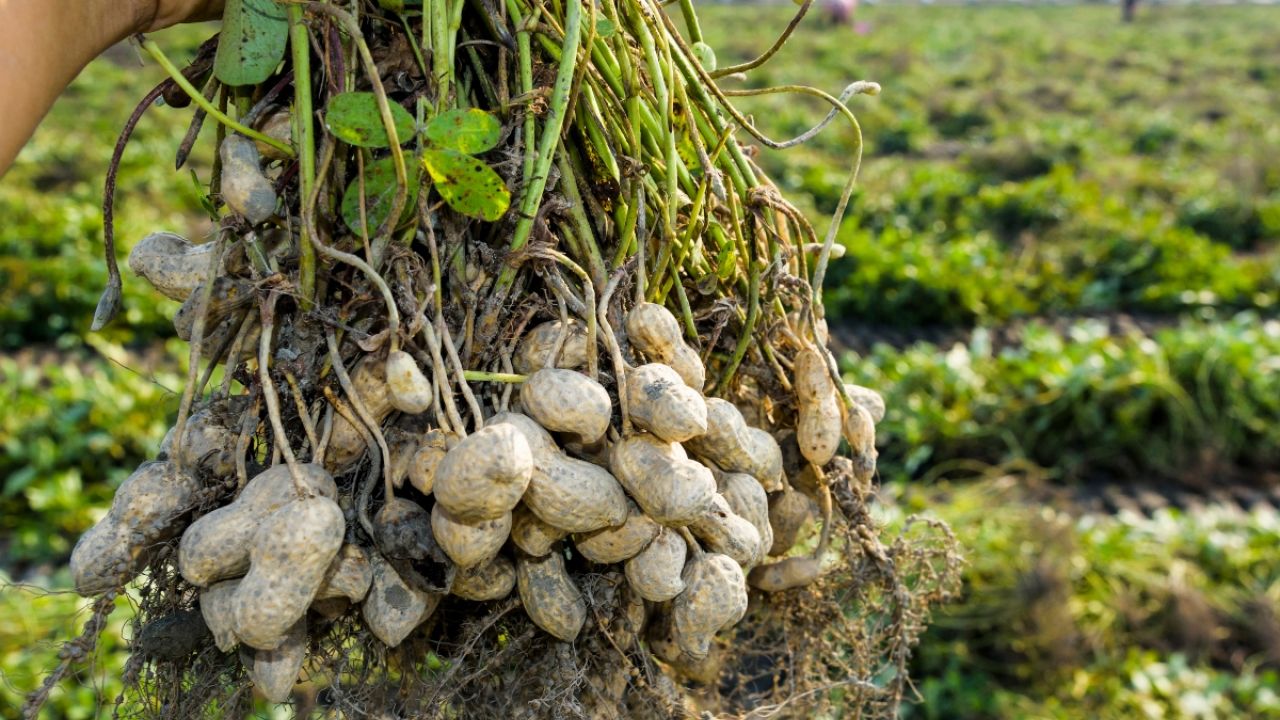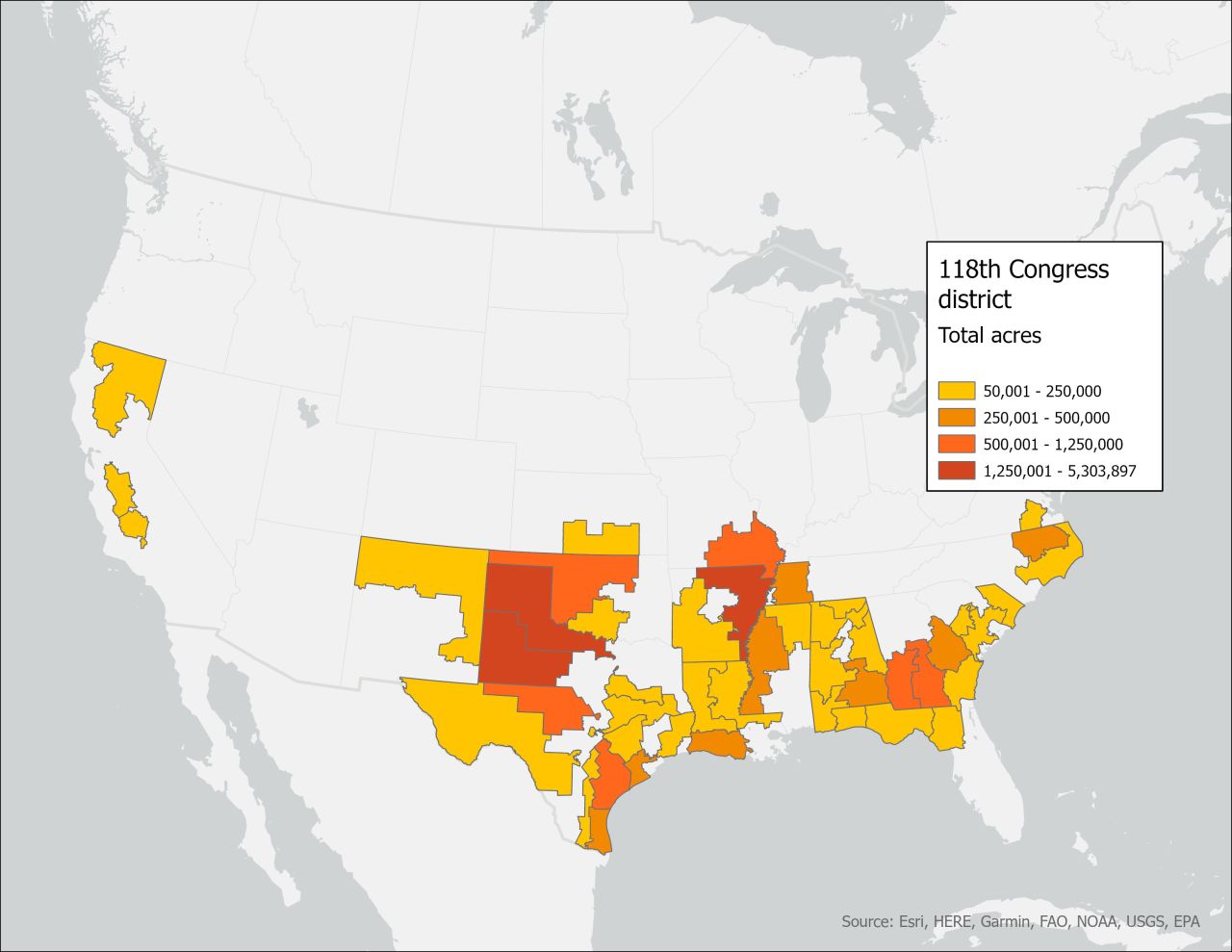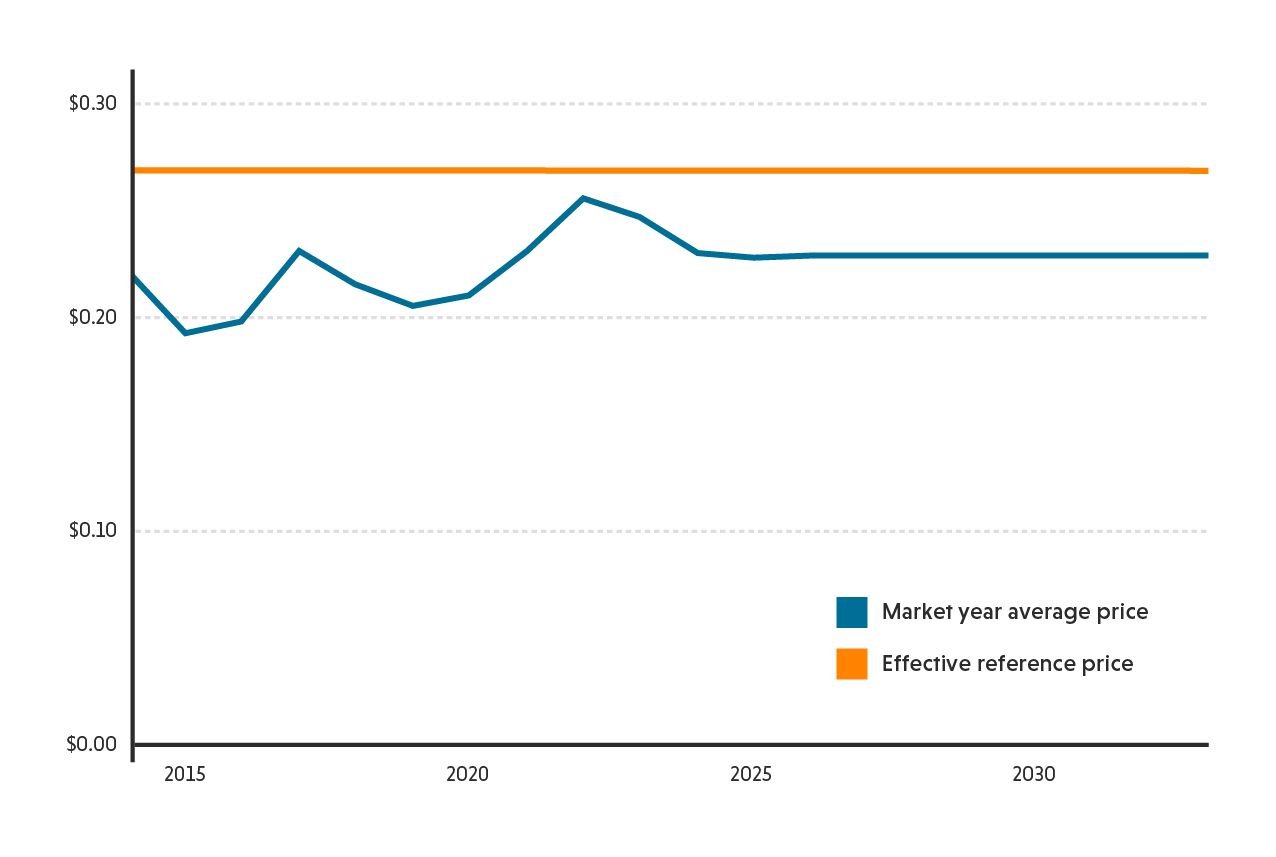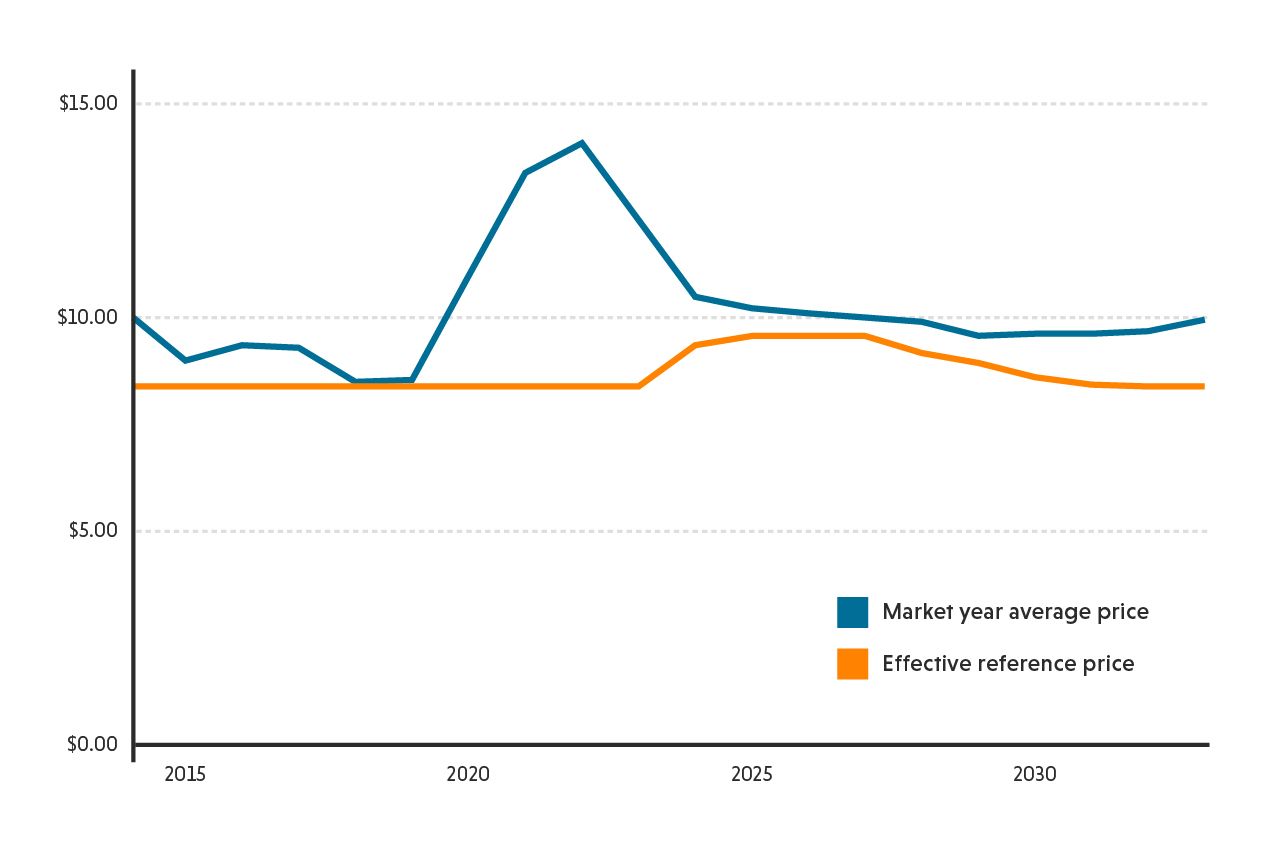
Increasing price guarantees for major crops would primarily benefit farmers growing peanuts, cotton and rice in Southern states, not corn and soybean farmers.
Proposals by some farm groups and legislators to increase price guarantees for covered commodities in the upcoming farm bill would overwhelmingly help farmers in Congressional districts in Alabama, Arkansas, Arizona, Florida, Georgia, Louisiana, Mississippi, North Carolina, Oklahoma, South Carolina, Tennessee, and Texas, an EWG analysis finds.
Acres of rice peanuts and cotton by congressional district

By contrast, farmers growing corn and soybeans in Midwestern states are not likely to see significant benefits from increases in the price guarantees that have been proposed for the Farm Bill, the analysis finds.
Only 48 congressional districts have farmers growing more than 50,000 acres of cotton, rice and peanuts, and only 33 districts have farmers growing more than 100,000 acres of these crops. Twenty nine of those 33 districts are represented in Congress by Republicans.
Once the price guarantees are triggered by declining market prices, farmers receive a payment to make up the difference between the price guarantee in the farm bill and the market price. Since payments are linked to production, the largest producers receive the lion’s share of the funding. In 2021, the top 10 percent of farmers received more than 80 percent of these Price Loss Coverage, or PLC, payments.
Farmers growing covered commodities must choose between subsidies triggered by either crop prices through the PLC program, or crop revenue through the Agricultural Risk Coverage, or ARC, program. Increasing the price guarantees included in the farm bill will only increase subsidies specifically triggered by crop prices in the PLC program.
Farmers growing peanuts, rice and cotton are overwhelmingly expected to choose subsidies triggered by crop prices, recent studies show. With the exception of rice growers in the central valley of California and cotton farmers in Arizona and New Mexico, most of these farmers are located in Southern states.
Most corn and soybean farmers will elect to receive subsidies linked to average county revenue, instead of just crop prices. So, increasing the price guarantees in the farm bill will not help most corn and soybean farmers.
Because crop prices have been high in recent years, fewer farmers have received subsidy payments triggered by falling prices. As crop prices return to average levels, more farmers are expected to begin receiving subsidy payments linked to price guarantees in 2024 and 2025, studies show.
For example, peanut, rice, and cotton farmers are expected to receive payments from the PLC program for the foreseeable future.
Peanut prices in dollars per pound

Source: USDA Farm Services Agency and University of Illinois
While peanut, rice and cotton farmers are expected to receive PLC payments in most years, farmers growing corn and soybeans are unlikely to receive payments linked to these price guarantees, studies show.
Soybean prices in dollars per bushel

Source: USDA Farm Services Agency and University of Illinois
In particular, the price guarantee for soybeans has never been triggered since Congress created the PLC program in 2014. By contrast, the price guarantee for peanuts has been triggered every year since 2014, and has been triggered for rice in all but one year.
Rigging subsidy programs to benefit Southern farmers is nothing new.
The Government Accountability Office found the Market Facilitation Program, or MFP, paid cotton farmers 33 times more than the costs of the damage and benefited southern states the most. The Department of Agriculture created the MFP during the Trump administration to address damage caused by President Donald Trump’s trade war with China.
An earlier EWG analysis found cuts to funding for “climate-smart” agricultural conservation practices to increase farm subsidies through reference price increases would hurt farmers in most states, including California, Michigan, New York and Pennsylvania.
Farmers in 30 states would receive less funding if Congress diverted climate-smart funding included in the Inflation Reduction Act, or IRA, to increase farm subsidies, EWG has found. While all farmers are eligible for USDA conservation funding, only 30 percent grow the crops that are eligible for commodity subsidies.


